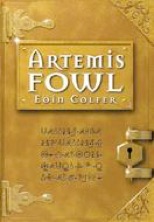LibraryThing in the Classroom


LibraryThing in the Classroom



LibraryThing Can Help All Teachers…
Keep track of and recall the books they have read for their own pleasure, professional development, or for use with students.

Identify and Evaluate Books
Suppose you are looking for children’s books about squirrels for a fall unit. Or biographies of scientists for middle school students. Just enter the appropriate Tags in the search engine, and LibraryThing generates a list. Look over the reviews to determine your best choices. Often you can link to external sites and peek into the book to make sure the content, reading level, and tone are appropriate.

Tip! Use Tags Creatively
LibraryThing automatically includes the book’s subjects, just as old fashioned card catalogues did. But Tags are your personal tool for identifying and organizing books. One teacher uses the Tag 55 to identify books he has in his classroom. Perhaps you will want to identify easy reading or challenges for your classroom, identify male and female protagonists, or associate books with a unit of study.
Ideas Welcome!
Teachers who are using LibraryThing are invited to contribute their ideas. Email them to this site and I will share them and, of course, credit you for your contribution.
When students read books that match their interests, they are more likely to enjoy the experience, read more, and become better readers. The approach will vary, depending on the age of your students.
Primary School Teachers… Help Them Make Good Choices
•Create your own account with a collection of books targeted to your students.
•Write reviews they can understand… no spoilers!
•Arrange the style of your book list to feature book covers.
•Confer with students by identifying as least one book the student has read and liked, then use the recommendations to guide the student to a new book. Or, ask the student about topics that are of interest and use a Tag search to find appropriate books.
•Once students are experienced in using the website, all but the youngest will be able to search independently.
•Let students print out book cover art for reports or create a montage of all the books they read over the year.
Middle School Teachers…Give Your Students A Voice
•Create your own account with a collection of books targeted to your students.
•Have the students write reviews (see Review section below).
•Collaboratively, the students create a resource for their classmates that they can take pride in. You establish a positive social norm for reading and writing about books.
•While most middle-schoolers can use LibraryThing independently, you can use the website to confer with reluctant readers and help them locate books that will suit their interests and reading level.
•Let students include the cover art in reports and reviews and post them around the room.
High School Teachers…
Give Your Students A Valuable Resource
•Have each student create an account and build his or her own collection including both independent and assigned reading. By including shared readings, the account will include books at the appropriate grade level and generate appropriate recommendations. However, allow students to rate the required books honestly.
•Recommendations will be based on the student’s own interests (as well as assigned readings).
•Teach students to use Tags to identify themes to foster text-to-text connections and provide a basis for common-theme essays.
•Teach students to use the review and comments sections so they will have a useful resource for studying. While reviews are public, private comments can be used for detailed notes such as those a student might record in a reading guide. (See Review section below.)
•Use LibraryThing as a reading log. Have students include start and end dates in their entries.
•As needed, use LibraryThing to confer with reluctant readers, helping them to identify books that address their interests.
High School Teachers… Communicate About Books Online
•When the entire class is reading one book, create a private Group and use the Talk feature for reader response assignments. Use good responses as a springboard for class discussion. Here are some ideas:
•Ask students to enter a favorite quote from the assigned reading. Have them explain why it’s significant.
•Pose questions, as you would in a reader’s guide. Students can respond to you and to one another.
•Have students pose questions for class discussion.
The Value of Published Reviews
Students may feel less than enthusiastic about responding to literature when the teacher is the only audience. By inviting students to publish their reviews in LibraryThing, you are giving them a world-wide audience and motivating them to produce high quality material.
Good reviews require high-order thinking skills. Teach your students to consider the following:
What makes a good review?
How much do readers want to know?
Why did I like/dislike the book?
Who else might like this book?
Depending on the grade you are teaching, you may ask students to include comments about various literary aspects of the work, without spoiling the plot. Suggestions include:
Effectiveness of characterization
Role of the setting
Mood
Tone
Quotes



Help Students Find Books They Love to Read



